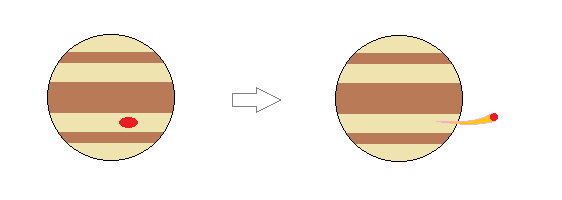Three years have passed since NASA’s DART probe hit the asteroid Dimorphos. An impact that shortened its…

Planet B
There has of late been some talk about space missions with the purpose of colonizing nearby planets. Mars is sighted as a good option. However, the future may hold Venus as our preferred planet B.
Life on Venus
The reason for this is that astronomers have found traces of phosphine in the clouds of Venus.
This is not in itself proof that there must be life on Venus. However, the only known sources of this gas on Earth are non-oxygen breathing microbes. It’s therefore likely that Venus has this kind of microbes present in her atmosphere.
This discovery fits well with predictions made by proponents of the Electric Universe.
In this alternative paradigm, things happen faster than what is generally believed. There is also an abundance of life throughout the universe. Primarily in the form of microbes and similarly primitive organisms.
A young planet
Proponents of the Electric universe believes that Venus is a young planet, possibly no more than 10,000 years old.
Ejected from Jupiter, as a hot ball of minerals and gases, she’s still cooling down from her birth. But she’s apparently already cool enough to host certain microbes.
Alternatively, the presence of phosphine is due to her origin as a storm in the atmosphere of Jupiter, which also contains phosphine.
Either way, the presence of this gas in Venus’ clouds constitutes compelling evidence in support of the Electric Universe paradigm.

Rapid emergence of life
It is generally believed that life emerges slowly over millions of years. However, Electric Universe proponents see such processes happen at much shorter time scales.
Creation and subsequent cooling and stabilization of planets is believed to take tens of thousands of years years, not millions.
Furthermore, life emerges as soon as a planet’s atmosphere is cool enough to host it.
Venus as an Earth-like planet B
Venus is roughly equal in size to Earth, and she has plenty of minerals and gases to convert into organic matter.
This means that Venus may become inhabitable within a few hundred thousand years. That is if she’s left to develop naturally. But if we find ways to assist this process, this might be speeded up significantly.
We can for instance seed the planet with beneficial organisms. Done properly, we may be able to turn the atmosphere into something similar to what we have here on Earth. It may even be possible to turn Venus into something even more lush and inviting than Earth.
Mars, on the other hand, is a barren wasteland. Its atmosphere is thin, and there’s hardly any organic chemicals to be found.
No amount of engineering will turn Mars into a lush garden.
Conclusion
It is Venus rather than Mars that looks the most likely to become an alternative to Earth in the not too distant future. While Venus is not currently our planet B, she may well be so a hundred thousand years from now.



Comments (0)